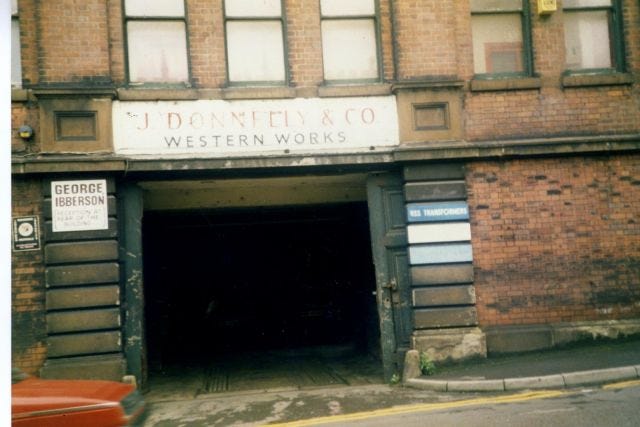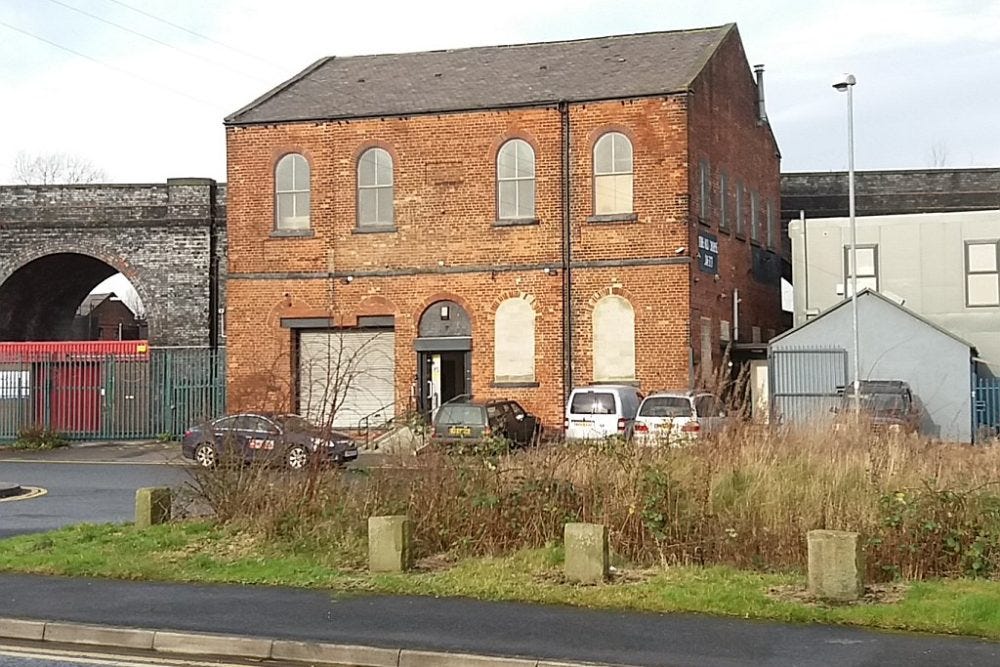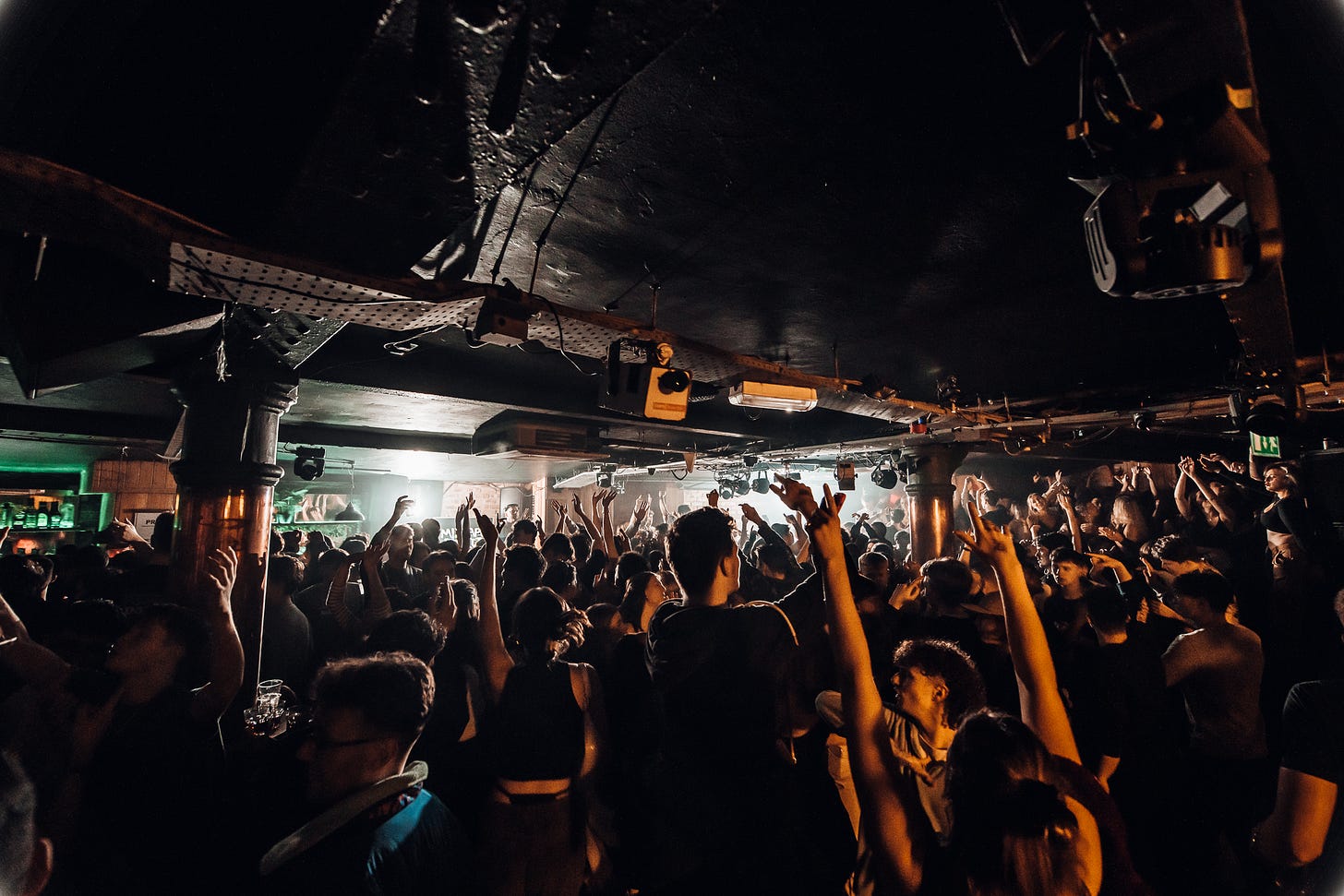A Ladder Of Venues
A city boasting a vibrant music scene should have a ladder of venues to propel its local bands. Before, during, and after the New Yorkshire Wave, both Sheffield and Leeds certainly did.
There are various interpretations of a band ‘making it’. For some, it could simply be performing a gig without cocking up. That could be in their local pub, or in front of friends at their own rehearsal rooms. Other bands aim a bit higher. Their definition of ‘making it’ could include supporting a nationally-known touring band at an established local venue. For the media, a band ‘making it’ would typically mean breaking out of their local scene and touring the country.
Last week, I focused on What Creates A Music Scene and that includes a range of venues, each catering to various steps of a band’s journey. From those bands just starting out, to those who have been around the world to return to their home city. In this Substack, I will focus on each group of venues and how a ladder of venues operated in Sheffield and Leeds during the New Yorkshire Wave.
Cheap Rehearsal Rooms
Before a band steps out to perform in front of the public, they have to hone their craft. Without cheap rehearsal rooms, bands are typically left hoping that they can find a vacant garage or a similarly-sized space to play away from prying eyes and ears.
In Sheffield, there was a sense of déjà vu to the New Yorkshire Wave. During the 1970s and early 1980s, bands such as Cabaret Voltaire, Human League, ABC, Thompson Twins, and Heaven 17 emerged to form the city’s synth-pop scene. These bands were busy creating the sound of the future in spaces that were once ‘mester’ workshops for creating cutlery. Dirt cheap as they were soon to become vacant following Margaret Thatcher’s destruction of the city’s steel industry.
Cabaret Voltaire rehearsed and recorded in rented rooms on the second floor of Western Works. Though cheap, it was still strange for a band to have their own space and studio. Soon, these rooms became a mecca for other local bands such as Artery and Chakk. Alas, Western Works is no more and became Regent Court where Sheffield University houses its Department of Computer Science.
Fast-forward to the early 2000s and The Long Blondes were rehearsing in BOK Studios which was once part of Portland Works. Once known as the starting point for Sheffield steel manufacturing, it was bought by a social enterprise in 2013 and the grade 2 listed building is now home to several independent craftspeople and small businesses. Before that, it was a rundown spoon factory where Def Leppard rehearsed.
Further out of town, the areas of Neepsend and Attercliffe contained several other vacant spaces that were also once part of Sheffield’s thriving steel industry. Arctic Monkeys were so keen to show the space where they had honed their craft, they featured Bruce Works as the artwork for their second single, ‘When The Sun Goes Down’.
In Leeds, Kaiser Chiefs predominantly used Old Chapel Music Studios which is in Holbeck. The band are still known to use it and the studios recently announced free tours. Other bands to rehearse there include The Pigeon Detectives and Pulled Apart By Horses.
The Cribs pretty much avoided the ‘Pay to Play’ model that irked so many promising bands at the time in cities like Sheffield and Leeds. Rather than going through the bureaucracy of selling tickets to their own gig and covering the difference with promoters, the band created their own venue. Better than that, Springtime was a gig venue, rehearsal space, and studio all in one. It can even be credited with becoming the focal point for Wakefield’s music scene.
Pubs and Bars
Once a band has a set of songs (typically a mix of their own songs with a few covers thrown in), they can look to perform on stage, in public. The smallest stages will typically be in their local pubs and around the time of the New Yorkshire Wave, several would host band nights to showcase new talent. In Sheffield, the list includes The Earl of Arundel & Surrey, The Deep End (now The Rawson Spring), The Grapes, The Howard, The Washington, and The Cricketer’s Arms. Further bars that put on bands included The Green Room and The Harley. Even Sheffield Hallam University got involved by allowing promising bands, such as Milburn, to perform in the Nelson Mandela Building with band development programs in 2001.
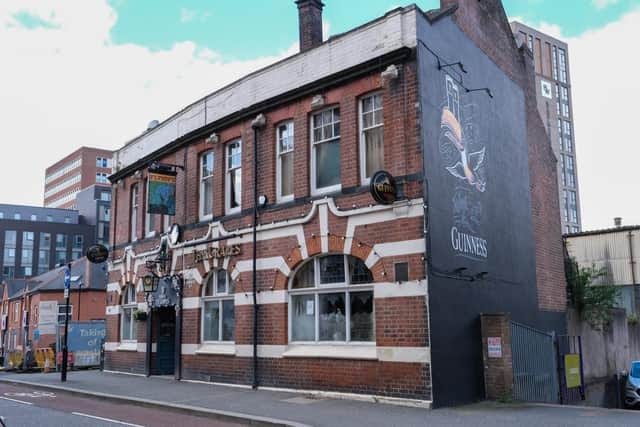
Leeds could count upon The Vine on The Headrow which was known as a traditional pub until it became one of the best places to see up-and-coming bands. What was a spit and sawdust pub for most of the week ushered in music fans from around 2004 to see the likes of The Cribs and 10,000 Things. Arctic Monkeys even performed there in October 2004. There was also The Fenton, an independent pub towards Leeds’ outskirts, and The HiFi Club.
What also helped bands in the New Yorkshire Wave was a clever bit of legislation passed by the Labour government. The Licensing Act 2003 actually came into effect on midnight of 24th November 2005. The legislation allowed ‘regulated entertainment’, essentially more pubs could allow bands to perform without the threat of being closed down by police or the council. In Sheffield, that opened the doors for venues like The Frog and Parrot. It also created the feasibility of inner-city music festivals akin to SXSW in Austin, Texas where bars opened up their doors to performing bands. Live at Leeds was launched in May 2007 while Tramlines would come two years later.
Established Venues
Established venues may seem reserved to touring bands yet they are crucial to local bands too. The Duchess of York had been operating in Leeds since the Eighties and became the spot to watch bands that were about to go big. Before its closure in 2000, the venue had hosted the likes of Nirvana, Coldplay, Pulp, The Verve, and Oasis before they became huge. Like The Leadmill in Sheffield, The Duchess became a stalwart of Indie Guitar music by hosting bands on their first national tour. Of a similar capacity, there’s the Brudenell Social Club in Leeds.
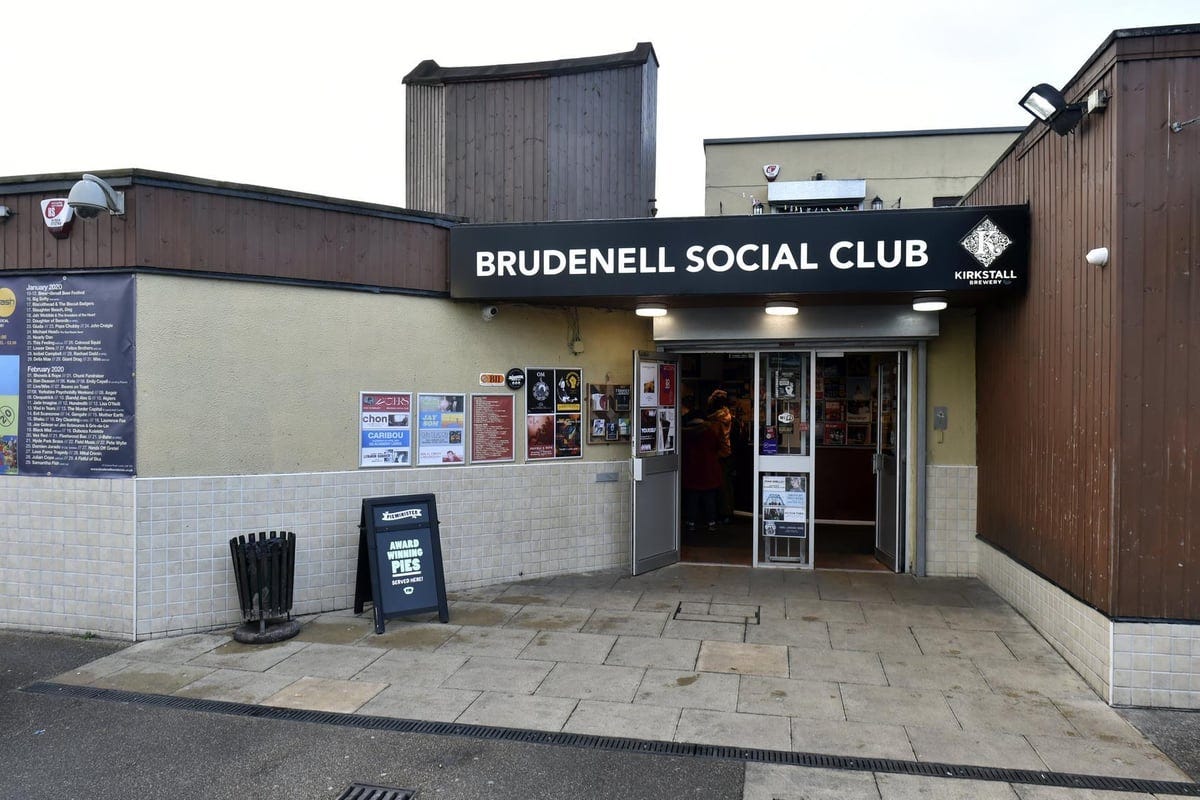
Leeds also had The Cockpit, which initially hosted the Brighton Beach indie club night in the Nineties, where two members of Kaiser Chiefs met. When the New Yorkshire Wave arrived, The Cockpit was a key venue for local bands to grab a valuable support slot, such as Kaiser Chiefs warming up for Franz Ferdinand. The Faversham is now an events space yet was known as the epicentre of Leeds’ goth scene in the 1980s. During the New Yorkshire Wave, it hosted the country’s leading guitar bands, including Arctic Monkeys and Franz Ferdinand.
A formative venue for so many bands in Sheffield, whether on stage, behind the bar, or working on the door, was The Boardwalk. When they weren’t performing their duties in bands, Alex Turner and Alex Nicholson (Arctic Monkeys) and Jon McClure (Reverend and The Makers) were serving behind the bar. Jon Windle and Maz (Little Man Tate) also worked on the door for gigs. Sheffield bands would also host their own secret guerilla gigs downstairs, Under The Boardwalk.
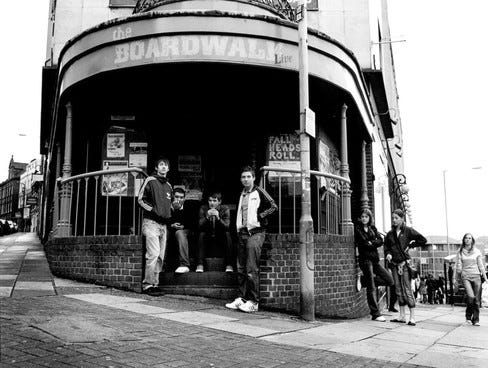
Ostensibly a rock venue, Casbah regularly hosted the likes of Milburn, Trap2, and The Long Blondes. There was also Fez Club which would host nationally touring bands, as well as including support slots for Arctic Monkeys (famously Tom Vek who refused to visit the city for years after due to the embarassment) and Harrisons. Perhaps a little too early for the New Yorkshire Wave, there was also Barfly in Sheffield, which was mainly held at the National Centre of Popular Music until 2003. The building is still in use as Sheffield Hallam University’s Student’s Union. To host Arctic Monkeys when they went number one with I Bet You Look Good on the Dancefloor, the band performed two gigs during the opening weeks of The Plug (now known as Network).
Sheffield University also had several venues of its own. Foundry and Fusion was home to Fuzz Club which, like Fez Club, hosted touring bands and made support slots available to local bands. As an important step between established venues and arenas, there was The Octagon which has a capacity of 1800. For bands who wanted to try an unconventional venue, there was Corporation which features low ceilings, sticky floors, and black decor.
Arenas, Stadiums, and Iconic Spaces
As bands get bigger, demand soars. Following their successful debut albums, both Arctic Monkeys and Kaiser Chiefs had moved on from established venues. They were clearly too big for The Leadmill and Brudenell Social Club. When they passed through, the arenas in Sheffield and Leeds could host the bands for a much larger audience. On the odd occasion, both bands have found huge, iconic spaces to use as opportune huge homecoming gigs. Kaiser Chiefs playing Leeds United’s Elland Road in 2008 and 2019 as well as Arctic Monkeys taking over Hillsborough Park in 2023.
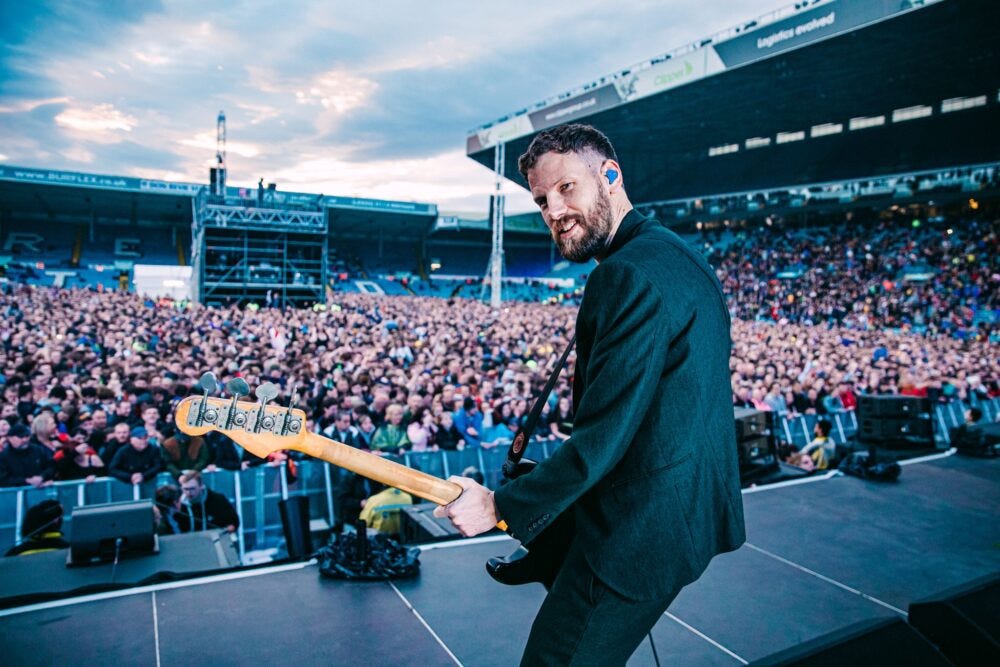
If Britain is to revive its music scene, it would do well to support those local grassroots venues. They offer a lifeblood to a city’s bands by offering them a space to perform and hone their craft. Without them, bands will struggle to get a foothold and a place to grow from. That’s partly why I believe the suggested levy on arena tickets is a worthwhile idea. Few British guitar bands have risen to headline arenas since the New Yorkshire Wave, though Bring Me The Horizon have managed it. If it is to happen again then those bands starting now need a ladder of venues to climb.




